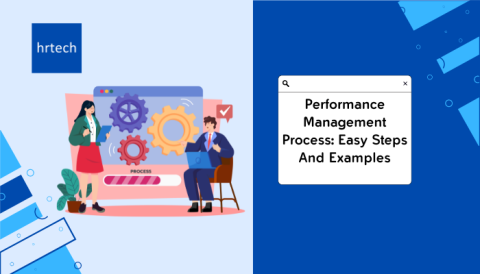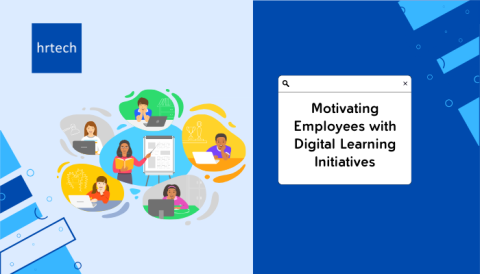TL;DR
- Nearly half of L&D professionals are concerned about the growing skills gap in organizations.
- Essential skills for L&D professionals include strategic thinking, communication, tech proficiency, and data analysis.
- A successful L&D strategy aligns learning initiatives with business goals and addresses skill gaps.
- Technology like LMS, AI, and data analytics enhances the effectiveness of L&D programs.
- Measuring L&D success through KPIs like engagement, completion rates, and ROI helps make programs more effective.
Introduction
Nearly half of learning and talent development professionals express concern about a growing skills gap in their organizations. As businesses continue to face rapid changes in technology and market demands, ensuring employees have the right skills to meet these challenges is more crucial than ever.
With this growing concern, organizations are realizing that their approach to learning and development (L&D) needs to be more strategic. L&D has become a core function that directly impacts company success. It’s no longer just about offering training sessions; it’s about building a learning culture that aligns with business goals and employee needs.
To stay ahead, companies must invest in solutions that address skill gaps, provide continuous development, and support both personal and professional growth. This guide will explore how to build a comprehensive L&D strategy that meets today’s challenges.
Essential Skills for L&D Professionals
For L&D to be effective, professionals in the field must possess a variety of skills that extend beyond simply designing training programs. These competencies allow them to create impactful learning experiences that resonate with employees at all levels. Below are the essential skills L&D professionals need to succeed:
Core Competencies
- Strategic Thinking: The ability to align learning initiatives with organizational goals and long-term strategies is paramount.
- Communication Skills: L&D professionals must communicate clearly with stakeholders at all levels to ensure buy-in and engagement.
- Technological Proficiency: Familiarity with learning management systems (LMS), e-learning tools, and other digital platforms is crucial.
- Data Analysis: Understanding how to use data to measure learning outcomes and adjust strategies accordingly ensures continuous improvement.
- Project Management: Managing the logistics of a learning program, from planning through to delivery, requires strong organizational skills.
Soft Skills
- Empathy and Adaptability: L&D professionals should be able to connect with employees, understanding their learning preferences and needs.
- Collaboration: Working across departments to ensure L&D efforts align with other business initiatives is a must.
- Creativity: Designing engaging, interactive, and effective learning programs requires a high level of creativity.
Developing these skills enables L&D professionals to create effective programs that deliver measurable results and foster employee engagement. As you continue developing your team, remember that investing in the growth of your L&D professionals is just as important as investing in your employees’ learning.
Creating a Winning L&D Strategy
Creating a strategic L&D program is not just about offering training sessions. It’s about building a comprehensive framework that addresses organizational needs and supports a culture of continuous learning. A well-crafted L&D strategy can help your organization bridge skill gaps and ensure that employees have the tools they need to succeed.
Aligning L&D with Business Goals
- Understand the Business Strategy: To create a relevant learning strategy, L&D must first understand the company’s goals and objectives. This ensures that every learning initiative directly supports the company’s strategic vision.
- Identify Skill Gaps: Conduct regular assessments to identify where employees need upskilling or reskilling. Tailor your programs to these specific needs.
- Gain Executive Support: Ensure that key executives understand the importance of L&D and its impact on business performance. This support is essential for securing the necessary resources and buy-in for your programs.
Structuring Your L&D Initiatives
- Needs Assessment: Before creating any programs, perform a thorough needs analysis to identify the skills and knowledge employees need most.
- Program Design: Develop a mix of learning modalities, such as e-learning, instructor-led training, and on-the-job learning. Flexibility is key to reaching diverse learning styles.
- Delivery: Choose the appropriate delivery method, whether it’s face-to-face, virtual, or a hybrid approach. Consider factors like location, technology access, and employee preferences.
- Evaluation: Use metrics and feedback to assess the effectiveness of your programs. Continuous improvement ensures that your L&D initiatives remain relevant and impactful.
As you work through these steps, always keep in mind that a solid strategy must remain flexible enough to adapt to the changing needs of the business and workforce. By developing a strategic L&D framework, you will not only fill immediate skill gaps but also ensure your organization remains competitive in the long run.
L&D Methods and Models

There is no one-size-fits-all approach to learning and development. Different learning methods cater to different needs and objectives, so it’s crucial to choose the right one for your organization’s goals. Below are some popular L&D methods and models that you can incorporate into your programs.
Popular Learning Methods
- Blended Learning: Combining both in-person and online training creates a flexible, engaging, and more effective learning experience.
- Microlearning: Short, focused learning sessions allow employees to learn at their own pace and revisit material as needed.
- Mentorship and Coaching: Personalized support through mentorship programs can help employees develop both hard and soft skills.
- Social Learning: Encouraging employees to learn from each other through collaboration, discussion forums, or peer reviews fosters a supportive learning culture.
- Gamification: Turning learning into a game-like experience motivates employees through rewards, competition, and interactive scenarios.
Learning Models
- The 70:20:10 Model: This model suggests that 70% of learning happens through on-the-job experiences, 20% through social learning, and 10% through formal education.
- ADDIE (Analysis, Design, Development, Implementation, Evaluation): A systematic model for designing effective learning experiences.
- Kirkpatrick’s Four Levels of Evaluation: This model helps measure the effectiveness of L&D programs based on reaction, learning, behavior, and results.
Choosing the right combination of methods and models will depend on your organization’s culture, resources, and specific goals. Be sure to tailor your approach to fit both employee needs and business objectives.
Using Technology in L&D
Technology plays an increasingly important role in the way L&D programs are designed and delivered. With tools like learning management systems (LMS), virtual classrooms, and AI-powered platforms, the possibilities for enhancing learning are vast. Here’s how to incorporate technology into your L&D strategy:
Key Technologies to Consider
- Learning Management Systems (LMS): A centralized platform for delivering and tracking online learning. It can help employees access training materials, track their progress, and receive feedback.
- Artificial Intelligence: AI can be used to deliver personalized learning experiences by recommending courses based on individual learning habits and performance.
- Virtual Reality (VR) and Augmented Reality (AR): These immersive technologies provide realistic simulations for skills practice, particularly in fields like healthcare, manufacturing, and customer service.
- Data Analytics: Analytics platforms can track learner engagement and performance, providing actionable insights to refine and improve your L&D programs.
By integrating technology, you can create a more engaging and effective learning environment for your employees. The key is to find the right mix of digital tools that align with your learning goals and your employees’ needs.
Key Performance Indicators (KPIs) for L&D Success

Measuring the success of L&D initiatives is crucial for understanding their impact and refining your strategy. Below are some key performance indicators (KPIs) that can help you track and evaluate the effectiveness of your programs:
Important KPIs to Track
- Employee Engagement: Monitor how actively employees are participating in learning programs. High engagement typically indicates relevant and motivating content.
- Learning Completion Rates: This metric shows how many employees complete the courses or training they start. High completion rates are usually a sign of well-designed content.
- Performance Improvement: Measure how well employees apply what they’ve learned in their roles. This is often assessed through performance reviews or on-the-job assessments.
- Return on Investment (ROI): Calculate the financial impact of your learning programs by comparing the costs of the training to the business outcomes it helps achieve.
- Feedback and Satisfaction: Collect learner feedback to assess how satisfied employees are with the learning programs. Satisfaction is often linked to the quality of the content and delivery method.
Tracking these KPIs allows you to continuously refine your L&D programs and ensure they align with the needs of your workforce and the business.
Diversity, Equity, and Inclusion (DEI) in L&D
Creating an inclusive learning environment is essential for fostering diversity and ensuring that all employees have the opportunity to succeed. L&D programs should be designed to promote DEI and cater to a wide range of learning styles and needs.
Best Practices for Inclusive L&D
- Culturally Relevant Content: Ensure that the content of your learning programs is relevant to a diverse workforce. Avoid biases and ensure that materials are culturally sensitive.
- Accessible Learning: Provide accessible learning resources for employees with disabilities, including captioned videos, screen readers, and alternative formats for training materials.
- Inclusive Training Programs: Create programs that address unconscious bias, cultural competence, and other topics that promote a more inclusive workplace.
By embedding DEI into your L&D programs, you help ensure that all employees feel valued and empowered to reach their full potential.
Conclusion
As organizations strive to build a skilled, adaptable workforce, L&D plays a critical role in driving success. Whether you’re focusing on upskilling, embracing new technologies, or addressing employee well-being, creating a strategic L&D plan is essential.
At TeamLease, we understand the challenges of crafting effective learning and development programs. Our network of over 10,000 trainers delivers learning programs covering functional and behavioral skills.
Our offerings include induction programs, hire-train-deploy solutions, certifications, cloud labs, executive education, and custom content development, all tailored to meet your unique business needs.
Contact us today to build a comprehensive learning strategy that helps your organization grow!
FAQs
Q: How do I assess the learning needs of my employees?
A: Conduct regular surveys, hold one-on-one interviews, or analyze performance data to identify gaps. You can also observe employees on the job to pinpoint areas where they need development.
Q: What are the key benefits of blended learning?
A: Blended learning allows employees to access training at their own pace, while still benefiting from interactive in-person sessions. This combination increases flexibility and engagement, making it easier for employees to fit learning into their schedules.
Q: How can I ensure my L&D programs remain relevant?
A: Regularly gather feedback from employees and managers. Review performance data to measure the impact of your training programs. Stay informed about industry trends and adapt your programs to address any emerging skills or knowledge areas.
Q: What technology tools should I include in my L&D strategy?
A: Consider using a Learning Management System (LMS) for centralized content delivery, analytics tools for tracking progress, and interactive platforms like virtual classrooms. AI can also personalize learning based on employee performance.
Q: How do I measure the ROI of my L&D programs?
A: Evaluate the improvement in employee performance, productivity, and engagement after training. Compare these outcomes with the cost of delivering the programs. Tracking metrics like completion rates, feedback, and on-the-job application also provides valuable insights.






